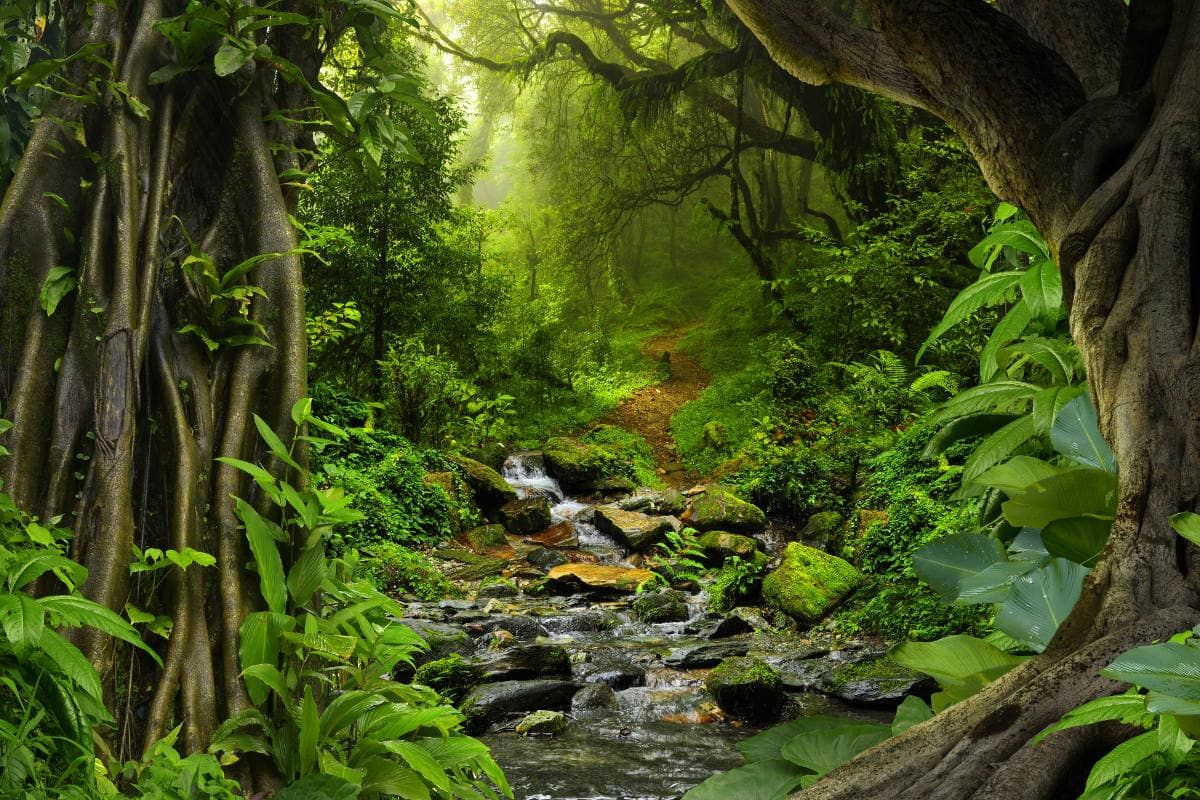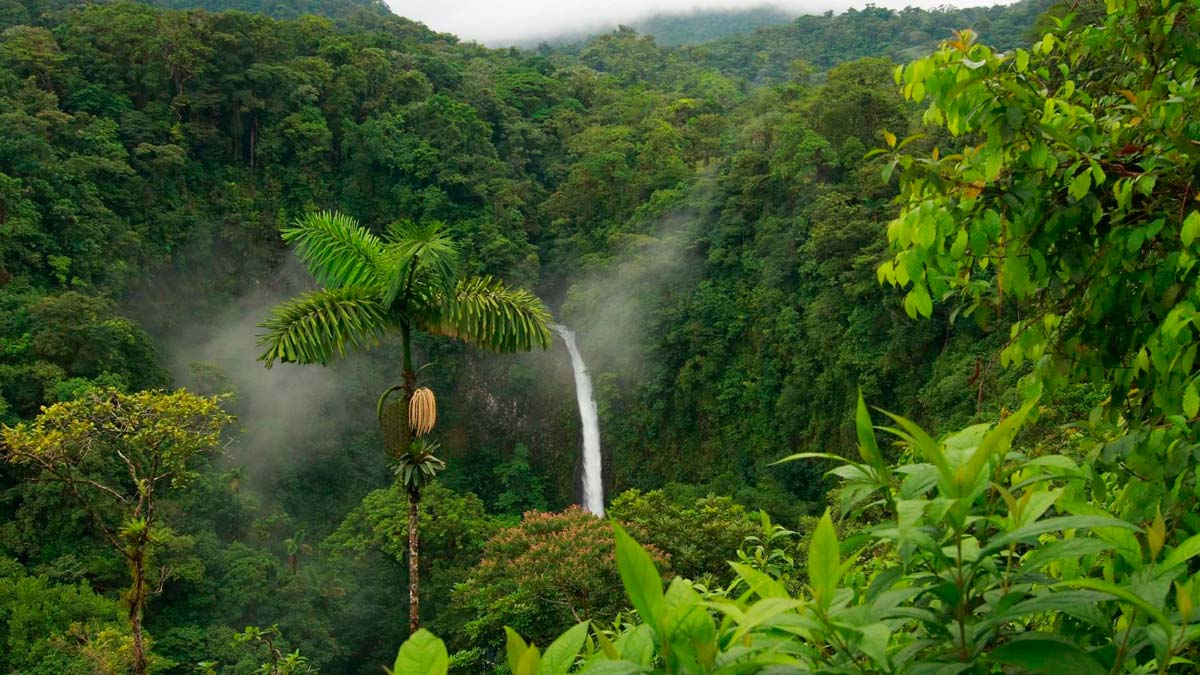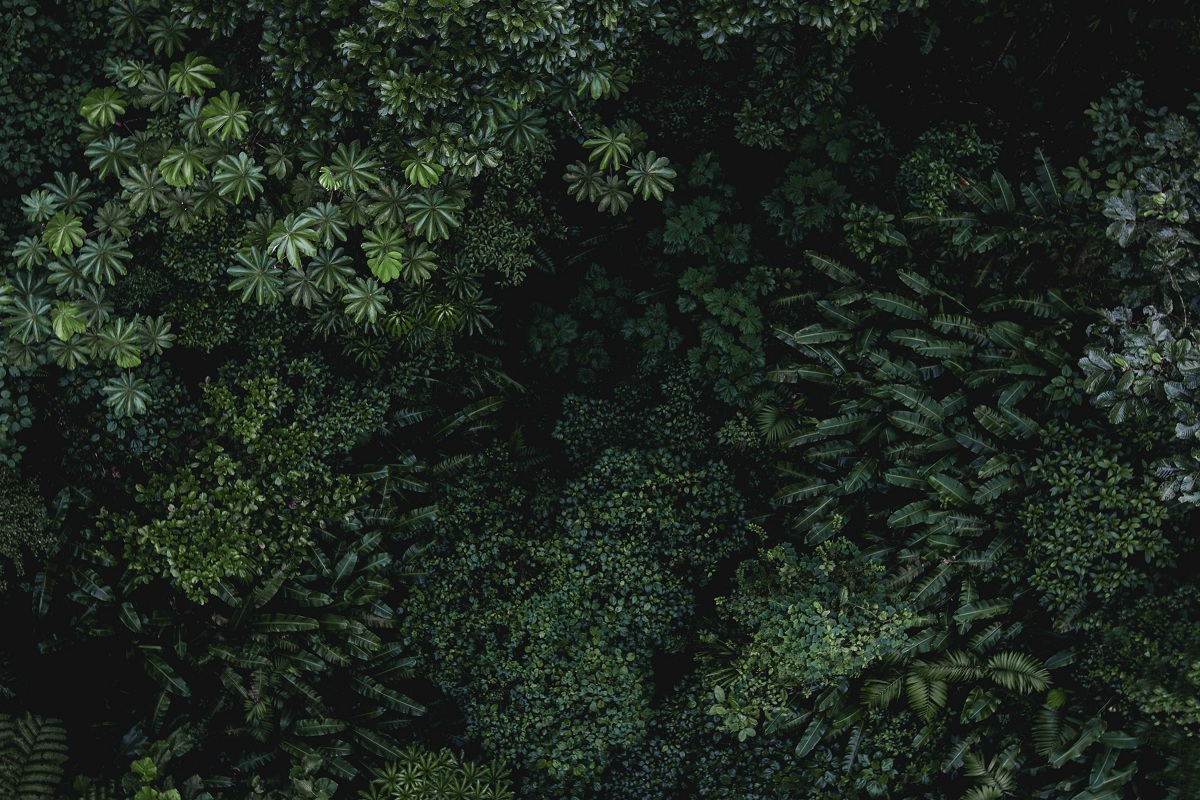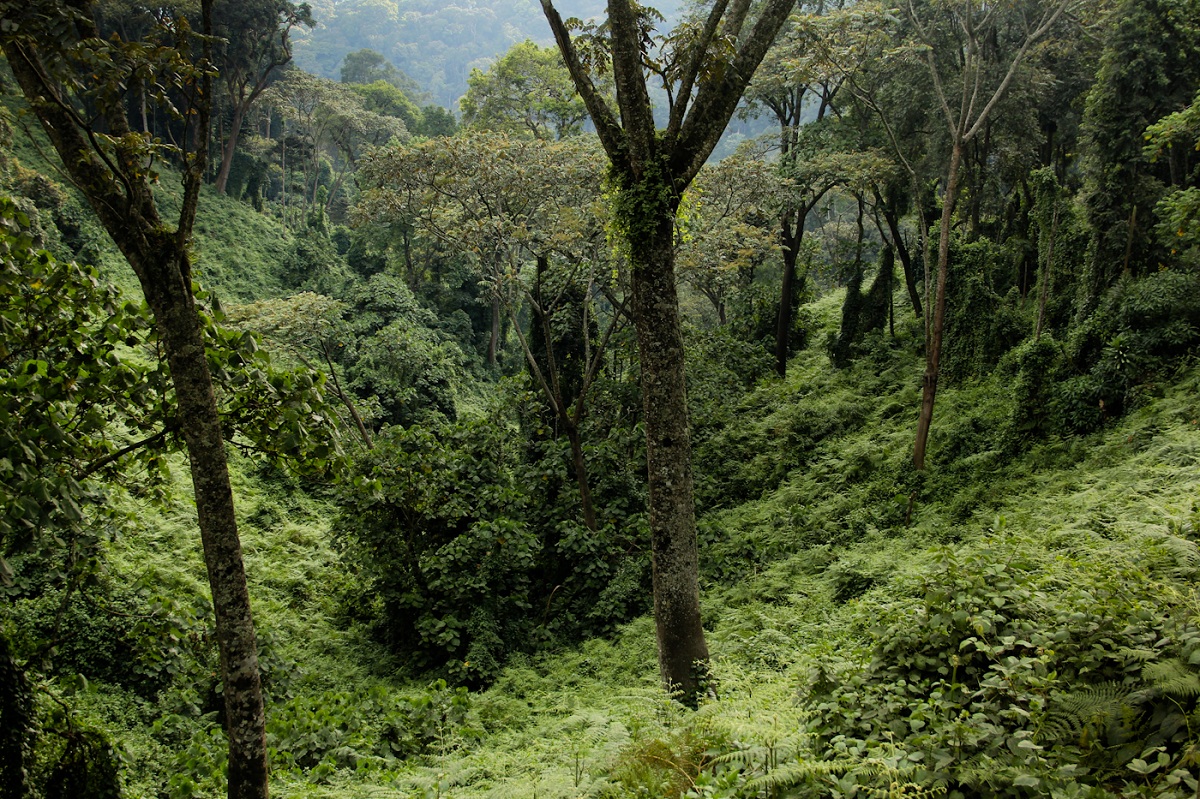
There are numerous ecosystems on the planet that are home to a large part of all biodiversity as a whole. The set of ecosystems that have the same characteristic is known as a biome. The biome of the rain forest It is known by many different names: rain forest, dense forests, jungle, among others. It stands out for having an extensive number of flora and fauna species as well as being characterized by having large trees. It is one of the most important ecosystems for the planet.
Therefore, we are going to dedicate this article to tell you everything you need to know about the tropical rainforest and its importance.
Rainforest location
The first of all is to know the areas of the planet where these types of biomes are located. The geographical location of the rainforest covers about 6% of the earth's surface and it is located especially in the tropic of Capricorn and the tropic of Cancer. The regions of the Asian continent are represented by the tropical forest and some of the American and African continents. There are some jungles on the islands of Oceania that are exceptionally dense jungles.
It must be taken into account that the density of the forests is important in order to be able to host a large amount of biodiversity. If we look at which the most important jungle is rich on our planet, we don't have to go to South America. Here we have the Amazon jungle. The Amazon rainforest is also known as Amazonia. The second most important forest is the Congo forest and others of less depth in regions of Madagascar, Mexico, Guatemala, Argentina or New Guinea.
Jungle Types

We are going to see what are the different types of forests according to their characteristics and their location. There are different types from a more basic point of view such as the temperate and tropical forests. Let's see what these generic classifications are:
Rain forest
It is located in more humid and warmer environments with regions in which the equatorial climate stands out. We would be more or less about 10 degrees north and south if we take the equator as a reference. The temperatures of the rainforests go throughout the year despite what is thought. The average is between 21 and 30 degrees, so they are quite high temperatures. It stands out for having a large amount of rainfall both in frequency and intensity.
The most abundant rainforests are in Southeast Asia, Central America, South America, Central and Western Africa, Australia, Western India, and the islands of New Guinea. The Amazon rainforest has an extraordinary richness in both vegetation and animals. It is considered the lung of the planet, although it is not entirely so due to the large number of trees that carry out photosynthesis and help as carbon dioxide sinks to clean part of the greenhouse gases that humans emit into the atmosphere. . These gases are the cause of climate change, which is why the Amazon rainforest it is a key piece to stop the increase in global temperatures.
Temperate rainforest
They are less common than the tropical ones and are located in regions whose temperatures are somewhat cooler and milder. They are especially geolocated over a humid oceanic climate but can also be found in regions with a humid or tropical climate.
If we place ourselves on the map, we can find coastal and mountain areas where this temperate forest is located. In when the temperatures, we see that they are around 10 and 21 degrees Celsius, so they have a lower temperature than the rainforest. Precipitation is also much lower since there is not a large amount of humidity like the other environment. We can find them in regions of southern Australia, Japan, the United Kingdom, Norway, New Zealand, the Northwest coast of North America. (Examples; it would be the Valdivian jungle or the temperate rainforest of the Appalachians)
Structure of the rainforest
Let's see what the structure of the tropical forest as well as the rest. The vegetal and organic richness makes the forests are formed by a structure that consists of 4 layers on their horizontal. We are going to get to know each of the layers:
- Pop-up layer: It is made up of mostly trees and can exceed 40 meters in height. They are trees that can withstand intense sunlight and is the highest layer. The trees found here are mainly evergreen and have very small leaves. Its surface is waxy and helps prevent dryness caused by excess solar radiation.
- Canopy: It is the second stratum of the tropical forest and has a height of about 30-45 meters. It is the area where the branches and crowns of trees come together to form dense tissue of leaves and branches. It can be said that it is a kind of cobweb for the lower layers. This layer houses most of the different species of plants and animals found in these ecosystems.
- Undergrowth: It is under the canopy and is an area with high humidity and low sunlight conditions. Here the main existing vegetation are plants with large leaves that have developed this size to be able to capture the little light that exists and have very short branches.
- Ground: finally we have the soil layer where the plants grow slowly due to the low light reaching the density of so many plants. The broad leaves of terrestrial plants stand out and a large amount of decomposing organic matter is found. These soils are very rich and fertile.
Flora and fauna
We have mentioned that the rainforest has a great variety of heterogeneous species of both flora and fauna. They are characterized by having a rich catalog of jungle species and various plants and species that can have a considerable height if we combine it with other species smaller than other ecosystems.
The usefulness of so many plants is varied from the human perspective both for medicines and for collecting resin and latex. Among the main plants found in the jungle we have lianas, orchids, bromeliads, shrubs, etc.
Regarding the fauna, we also have a large amount of fauna due to the abundant food. There is a wide variety of exotic and endemic species that are part of this impressive biome. They are characterized by having a wide diversity of insects such as ants, flies, stick insects, butterflies, among others. We also have larger animals such as alligators, monkeys, turtles, all kinds of snakes, jaguars, bats, tiger, crocodiles, a large number of frogs and tarantulas…etc.
I hope that with this information you can learn more about the tropical forest and its characteristics.

